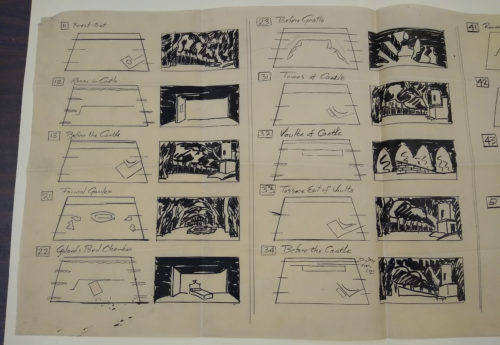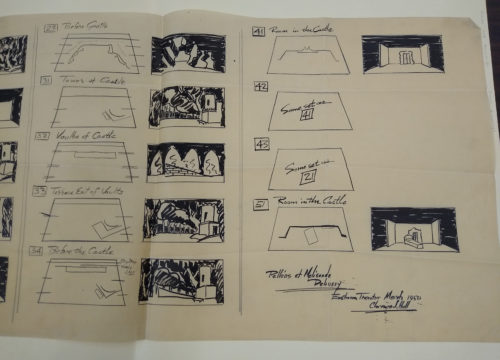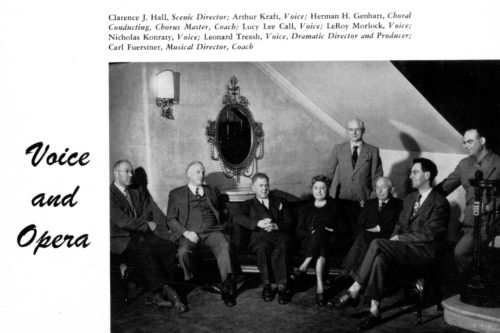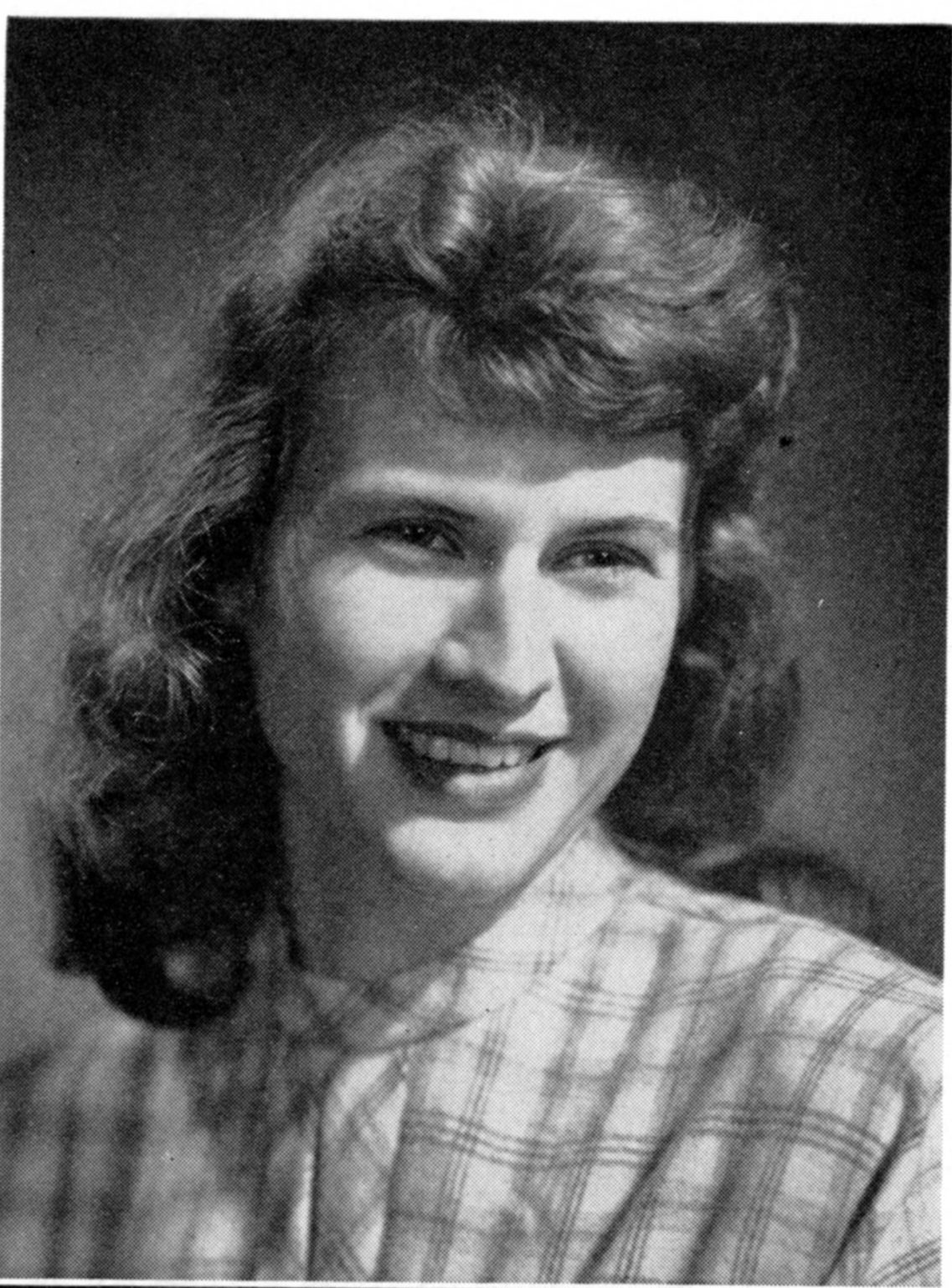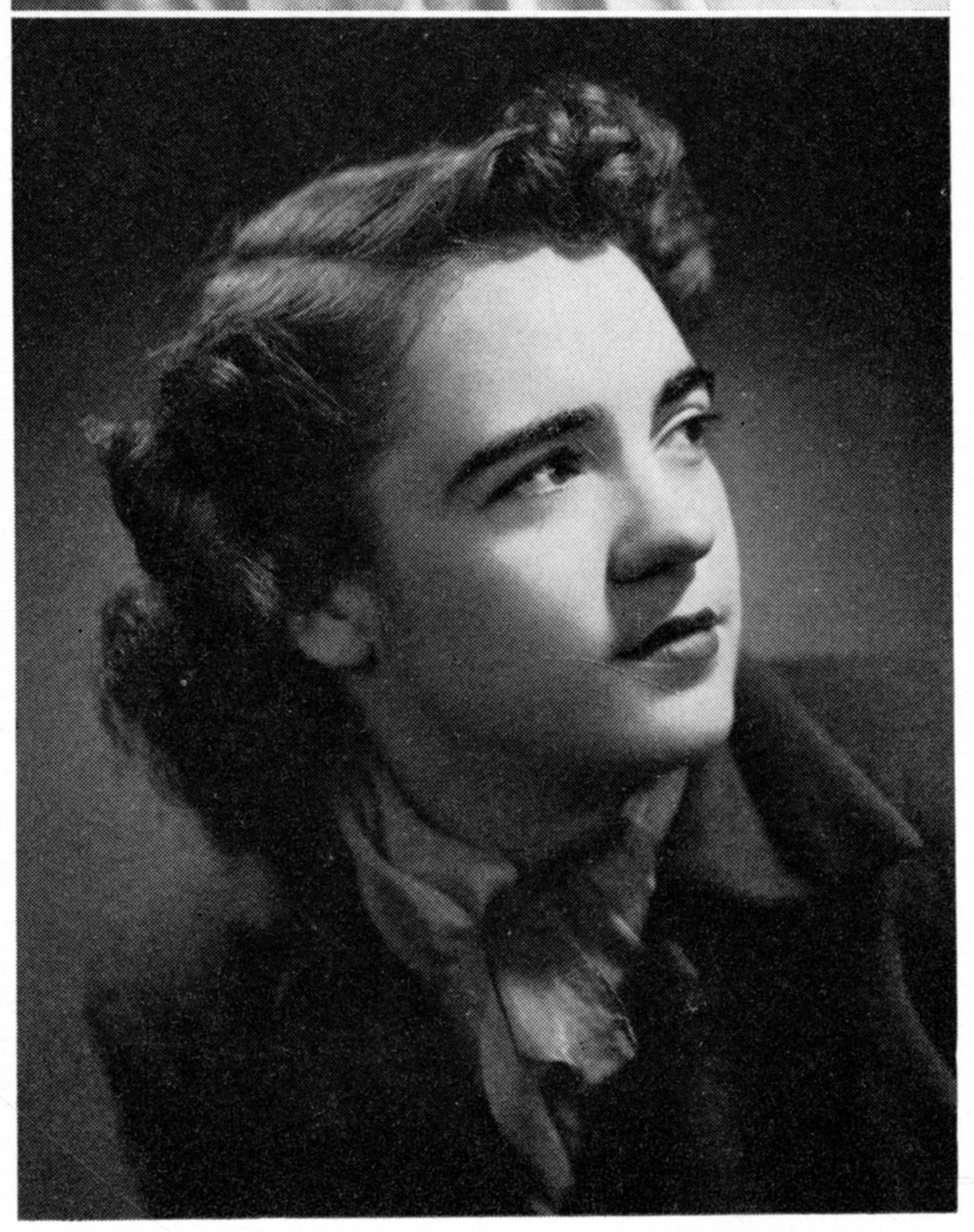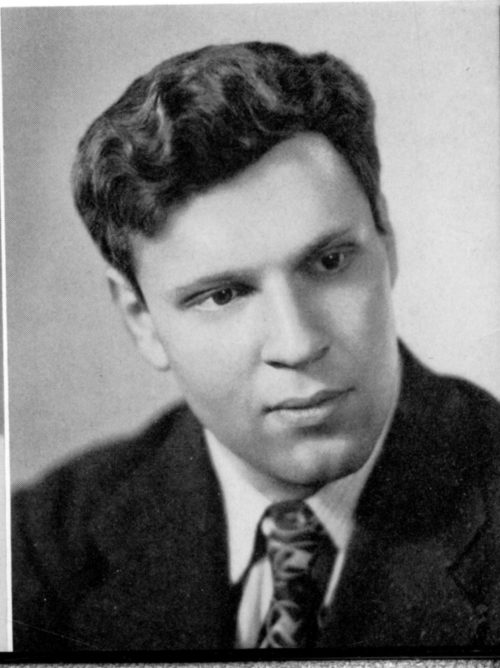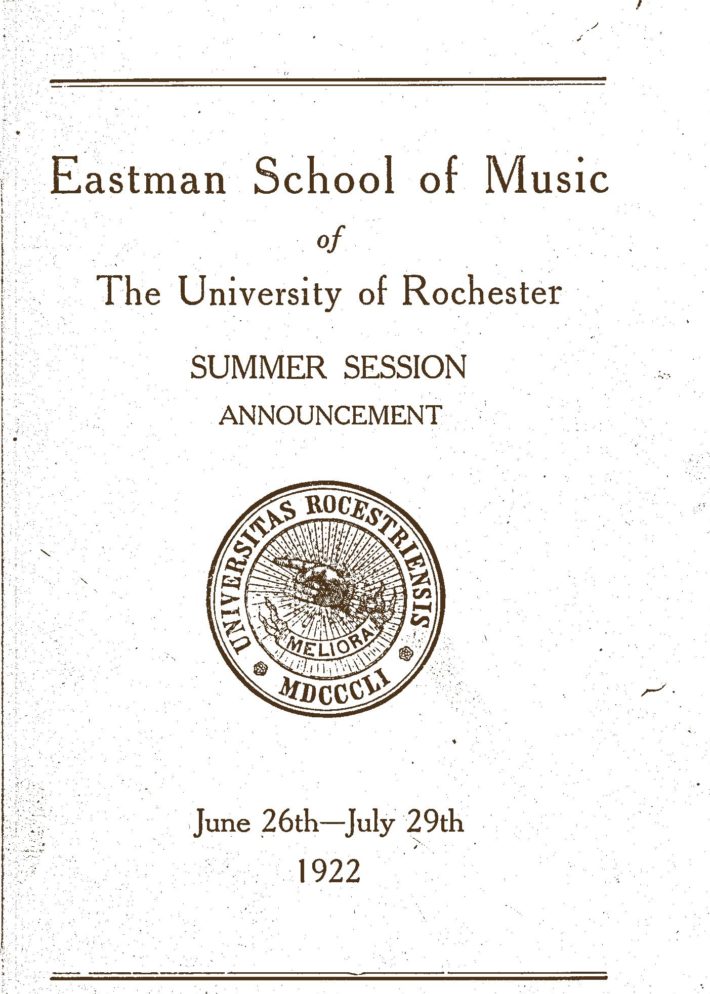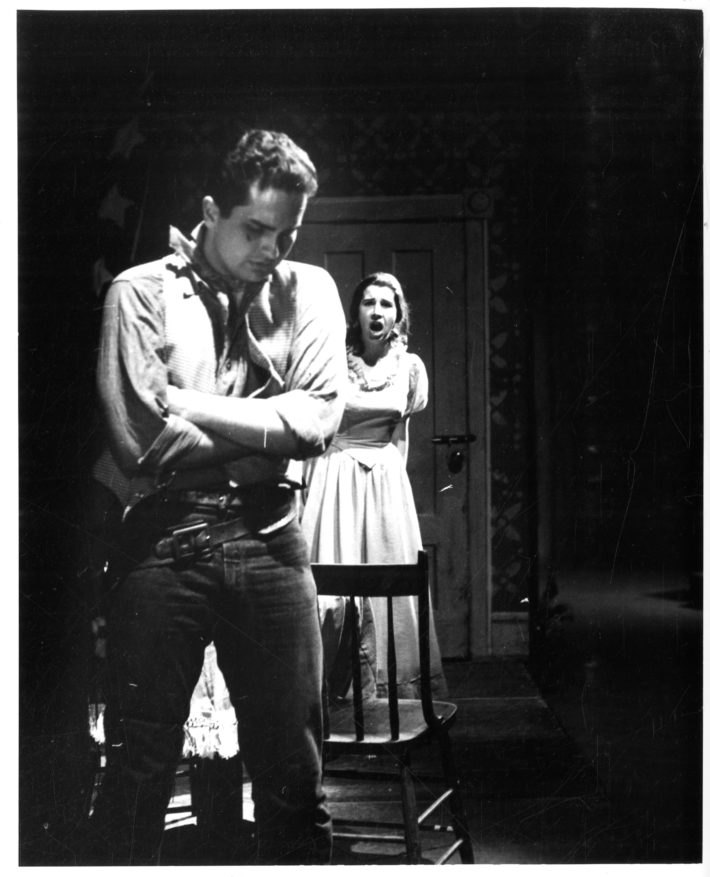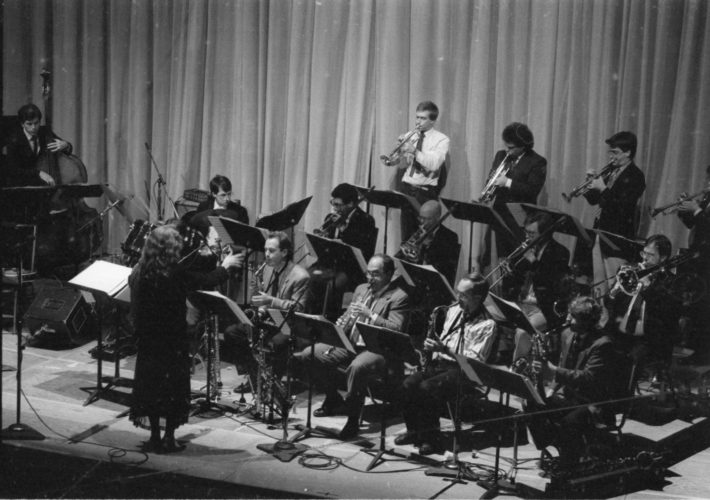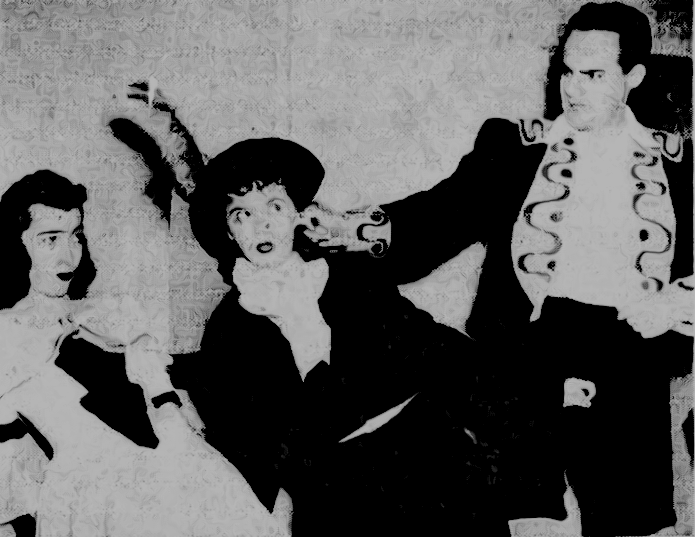February 13th-19th: Claude Debussy’s Pelléas et Mélisande
February 13, 2023Seventy-three years ago this week, on the evenings of February 13th and 14th, 1950, the Opera Workshop of the Eastman School staged Claude Debussy’s Pelléas et Mélisande, marking the Eastman School’s first production of this opera in its entirety. Premiered in April, 1902, Pelléas et Mélisande was based on the 1892 play of the same title by Belgian playwright Maurice Maeterlink (1862-1949), whose plays formed a significant part of the Symbolist movement in Europe, and who received the Nobel Prize in Literature in 1911 largely for his plays. In writing the opera Debussy did not work with a librettist, but instead, set the play as written while electing to eliminate several scenes. The Eastman production was directed and produced by Mr. Treash; assistant director and conductor was Ward Woodbury (served on faculty 1949-54); technical director was Clarence Hall (served on faculty 1929-58); and the musical accompaniment was provided by the Eastman School Senior Symphony Orchestra. Costumes were rented from the Hooker-Howe Costume Company (Haverhill, Mass.). The production was double-cast, with seven different performers taking the stage each evening. Post-graduation, those 14 Eastman performers went on a diverse range of professional careers; several of them chose academic careers and eventually attained professor emeritus/emerita status at their institutions.
► Audio excerpt from the opening of the February 13th, 1950 performance, presenting the orchestral introduction and Golaud’s entrance. The members of the Eastman School Senior Symphony Orchestra are conducted by Ward Woodbury; Samuel M. Jones sings the role of Golaud. Eastman Audio Archive, reformatted master tape EA 2685-01.
► Printed program, debut concert on February 8th, 1953. Eastman School of Music Archives.
► PHOTOS FROM THE PRODUCTION, representing the only known extant photos from this production. All published in The Score 1950
The Eastman School’s Opera Workshop, organized as such under newly appointed dramatic director of opera Leonard Treash (served on faculty 1947-76), represented a new approach to operatic training at Eastman whereby students would perform every task associated with operatic production so as to gain experience in acting, conducting, set design and set building. In this way each student would “. . .be well equipped to become a figure for the cause of Opera in America, either as a singing actor, a musical or stage director, a technician, or as a more intelligent and enthusiastic patron.”[1] In 1949-50 Professor Treash was in his third year at Eastman where he had already directed numerous presentations of scenes (with orchestral accompaniment), a production of Mozart’s The Marriage of Figaro, a Puccini double bill, and a double-bill of American operas at the 1949 Festival of American Music. The staging of Pelléas in 1950 represented Mr. Treash’s largest undertaking to date, and indeed, represented the Eastman School’s single largest operatic production to date to have been performed entirely by students.
► The set design drawings by Clarence J. Hall for the Eastman School Opera Workshop’s production of Pelléas and Mélisande in February, 1950. Leonard Treash Collection, Ruth T. Watanabe Special Collections, Sibley Music Library.
The Eastman School’s Opera Department (initially called the Opera Training Department) was founded in 1923 by Russian-born director and tenor Vladimir Rosing (1890-1963). I have featured Vladimir Rosing in previous TW@E entries; his years at Eastman were a time of novel innovation and experimentation. One year after founding the Opera Department, Mr. Rosing founded a professional company operating out of the Eastman School, the so-called Rochester American Opera Company. Mr. Rosing left the Eastman School’s employ at the end of the 1924-25 academic year, opting to focus all of his time and energy on his new opera company. When announcing Rosing’s decision, new ESM Director Howard Hanson established that operatic training at Eastman would henceforth proceed on an altogether more academic basis, structured more like a school than an opera company. In practical terms, this took the form of a prescribed academic regimen whereby the curriculum mandated that voice students would divide their time equally between opera and oratorio; moreover, provision was made for voice students to elect a “more academic course” by substituting academic electives for the operatic training. In 1925 Eugene Goossens was appointed General Director of the Department of Operatic Training, with Emanuel Balaban the musical director. In 1929 Hanson appointed Russian-born Nicholas Konraty the new dramatic director of opera; he served on the Eastman faculty 1929-57, and died in 1972. It appears to have been health considerations that prompted Mr. Konraty to step back from directing opera, and in 1947 Leonard Treash was appointed to succeed him. The appointment of Mr. Treash ushered in a new era and a new method, for Mr. Treash established the Opera Workshop as the vehicle for providing training and experience in all facets of operatic production and performance, a contrast with the previous curricular model. The Opera Workshop model continued through Mr. Treash’s retirement in 1976, after which his successor Richard Pearlman established Eastman Opera Theater.
The 1950 production of Pelléas and Mélisande marked the Eastman School’s first staging of this opera in its entirety; since that time there have been two more productions. Richard Pearlman directed Pelléas in May, 1987, staged in the Eastman Theater, and Steven Daigle directed Pelléas in January, 2009, staged in A804.
► PHOTOS OF THE SIX STUDENTS WHO SANG THE LEADING ROLES:
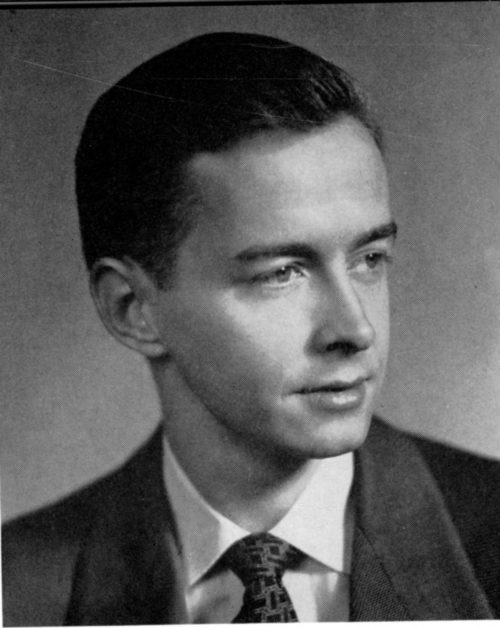
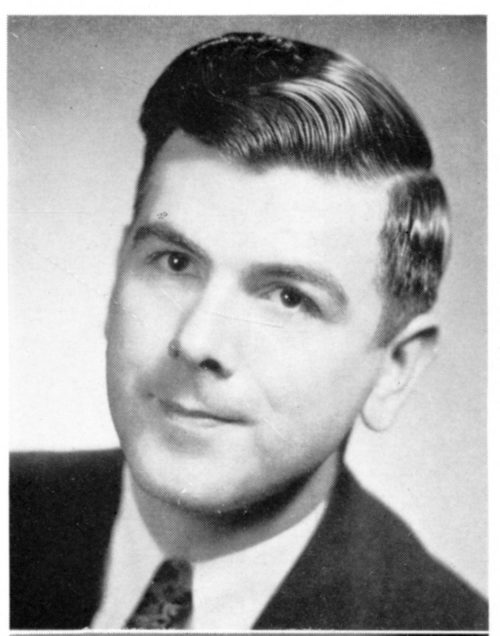
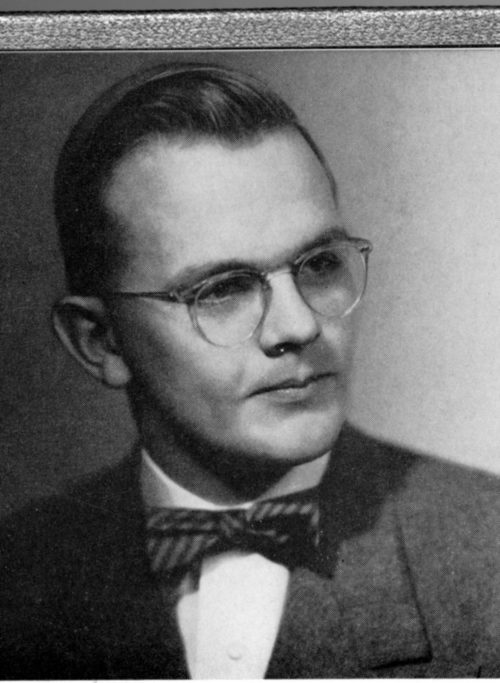
[1] As promoted in the Eastman School of Music Annual Catalogue 1948-49.

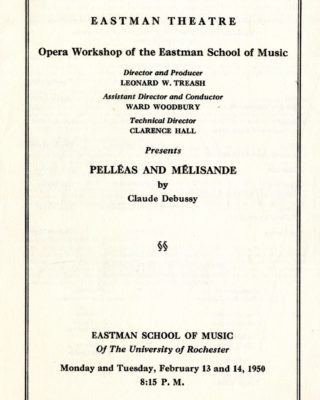
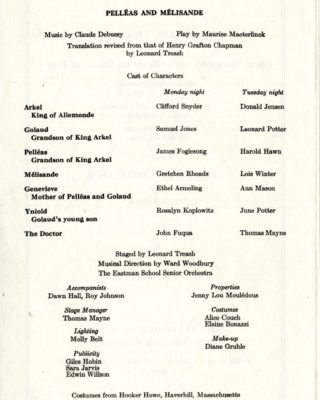
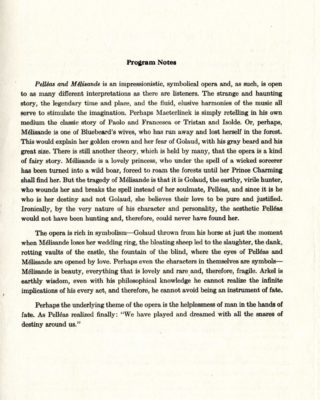
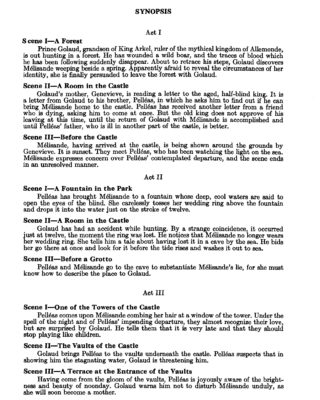
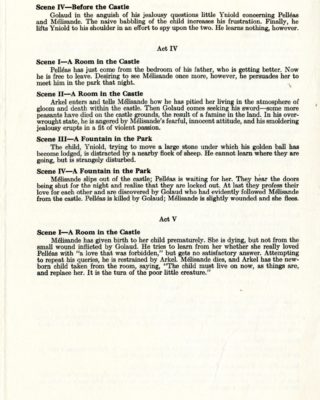
![The Score 1950 page [54] frame one Golaud and Mélisande. Act I, scene i.](https://www.esm.rochester.edu/sibley/files/The-Score-1950-page-54-frame-one-500x475.jpg)
![The Score 1950 page [54] frame two Geneviève and Arkel. Act I, scene ii.](https://www.esm.rochester.edu/sibley/files/The-Score-1950-page-54-frame-two-500x576.jpg)
![The Score 1950 page [54] frame five Geneviève, Arkel, and Pelléas. Act I, scene ii.](https://www.esm.rochester.edu/sibley/files/The-Score-1950-page-54-frame-five-500x420.jpg)
![The Score 1950 page [54] frame four Yniold and Golaud. Act III, scene iv.](https://www.esm.rochester.edu/sibley/files/The-Score-1950-page-54-frame-four-500x600.jpg)
![The Score 1950 page [54] frame three Mélisande and Pelléas. Act III, scene i.](https://www.esm.rochester.edu/sibley/files/The-Score-1950-page-54-frame-three-500x845.jpg)
![The Score 1950 page [54] frame six PHOTOS FROM THE PRODUCTION, representing the only known extant photos from this production. All published in The Score 1950](https://www.esm.rochester.edu/sibley/files/The-Score-1950-page-54-frame-six-500x396.jpg)
